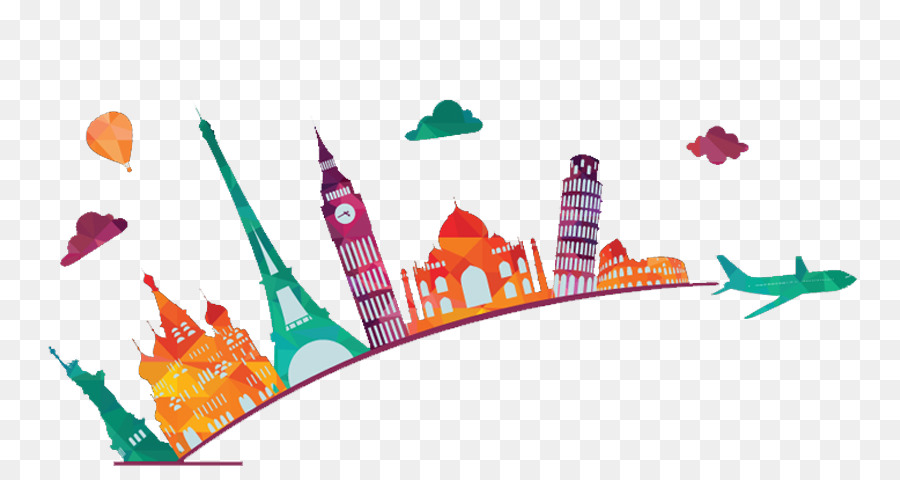
CHAPTER THREE
COMMUNITY PROFILE OF THE WA MUNICIPALITY
Location and Size
The Upper West Region is located in the north-western part of Ghana and shares borders with the La Cote D’Ivoire to the north,-west, Burkina Faso to the north, Upper East to the East and the Northern Region to the south. The Wa Municipal Assembly was created out of the then Wa District in 2004 with legislative instrument (L1) 1800 in pursuant of the policy of decentralization started in 1988. The Assembly is empowered as the highest political and administrative body in the Municipality charged with the responsibility of facilitating the implementation of national policies. Under section 10 of the Local Government Act 1993 (Act 426), the Assembly exercises deliberative, legislative and executive functions in the District. By this act, the Assembly is responsible for the overall development of the Municipality. The Wa Municipality is therefore tone of the eleven administrative areas (District Assemblies) that make up the Upper West Region (UWR) of Ghana. The Municipality shares administrative boundaries with Nadowli District to the north, the Wa East District to the east and the Wa west district to the west. The Municipality lies between latitudes 9º50!N to 10º20!N and between longitudes 9º40! W and 10º15!W. It has an area of approximately 234.74 km2, about 6.4% of the area of Upper West Region. The implication of the location of the municipality for development is, enhancing bilateral trade and commerce with Franco phone countries. The Wa town has the potential to grow and be upgraded into both an industrial and commercial hub for the north-western corridor of Ghana. The Figure 1 (map) below shows the location of the Wa Municipality with some of the peri-urban communities that fall victim of the rapidly urbanizing process in the municipality.
Demography
The Upper West region is the youngest region in Ghana. In 2010, the population of the region stood at 702,110 with a growth rate of 1.9% per annum. According to the 2010 population and Housing census, the Wa Municipality has a total population of 107,214. Currently, the total population of the municipality stands at 127,284 (male: 61,826/female: 65,458) with an urbanized population of 71,051 (GSS, 2012) representing 66.3% compared to the national urbanized share of 50.9% and the regional urbanized share of 16.3%. This also implies the Wa Municipality alone accounts for a 62% share of the region’s urbanized population in the year 2010. The Municipality is also reported as having an urban population growth rate of 4% as compared to the national urban growth rate of 3.4% (Wa Municipal, 2012; GSS, 2005; GSS, 2012). The population structure of the Wa municipality revealed a preponderance of the youth over the aged and females (51%) over males (49%). The youth form 49% of the total population with a potential working population of 47% and 4% aged. This means a high dependency ratio since the economically active population is 47% compared to dependent population of 53%. The population density is 542 persons per square kilometers with its associated development implication in the areas of housing, education and health facilities, environmental sanitation, water supply, pressure on land and socio-economic infrastructure due to the rapidly urbanising township. This raises the issue of population management, specifically, housing, land use planning, streetism, conflict management, to secure the future of the municipality.
The gender implication of the above includes programming for women, mother and children to provide for peculiar health, educational and economic needs and strengthening institutions for effective governance and protection of the vulnerable and excluded and also ensure human rights especially for women. A second implication is that the youthfulness of the population requires the provision of social infrastructure especially schools, crèches, day nursery, primary and junior secondary schools, healthcare services especially family planning, adolescent and reproductive health services. Thirdly, there is the need for skills development programmes that will provide the youth with employable skills to address current and future unemployment problems. These implications are linked to population management issues such as enhancing effective resource mobilization, human, financial and material resources for the provision of basic socio economic infrastructure and services in the educational and health sectors. There is also the need for capacity building and institutional strengthening for the staff of the municipal assembly and other sector departments and the need to embark upon vigorous population management programmes and employment creation for the youth. The existence of educational facilities universities, Polytechnics, long distance learning centers, vocational and technical institutions, availability of electricity, water, banking, telecommunication and transportation facilities employment opportunities and availability of agricultural fertile lands in the Wa town are responsible for the current rural exodus of populations into the city centre leading to the expansion of the urban centre towards the peri-urban communities in response to the influx of populations and developments.
Relief, Drainage and Topography
The Municipality lies in the Savannah high plains, which generally, is gently undulating with an average height between 160m and 300m above sea level. The gentle rolling nature of the landscape implies that the topography is no barrier to agriculture and other physical development. The low lying areas are found in the following localities; Charia, Zingu, Kperisi to the North and Piisi, Dapouha, Boli, Sing, Biihe and Busa to the South. These manifest in the form of valleys that collect and retain water during the rainy season and are therefore suitable for rice cultivation and livestock rearing. These low lying areas have further given rise to two main drainage systems, the Sing-Bakpong and its tributaries to the South and Billi and its tributaries to the North. The streams are seasonal and thus dry up during the long dry season thereby reducing available of water for agriculture, domestic, industrial and constructional uses. This implies the provision of dams, dugouts and rainwater harvesting in order to provide adequate water to meet the domestic and agricultural needs of the increasing population in the area.
Weather
The climate of the Wa Municipality is characterized by long, windy and hot dry season followed by the short and stormy wet season. The dry season occurs between November and April. The north eastern trade winds from the Sahara desert precipitates the cold harmattan winds between November and February which brings with it coughs, cold and other respiratory diseases and also skin diseases. The hot season records high temperatures with a peak of between 400C and 450C in March and April causing dehydration and incidence of cerebral meningitis. The effect of climate change is becoming more manifest of late due to human activities in terms of bush burning, felling of trees, poor farming practices and infrastructural activities. The wet season lasts between April and October. The annual mean rainfall volume of between 840 mm and 1400 mm is sparsely and poorly distributed over the months. The rainfall pattern is erratic and punctuated by spells of long droughts and heavy downpours and floods. This affects humidity levels, soil moisture levels, crop growth and general agricultural productivity.
Land use
Notwithstanding the fact that the municipality is the commercial hub of the upper west region, agriculture remains main the economic activity. It remains the largest single contributor to the local economy and employs about 70% of the active population. The main staple crops grown are millet, sorghum, maize, rice, cowpea and groundnuts cultivated on subsistence basis. However, soybeans, groundnuts, Bambara beans are produced as cash crops. Economic trees within the municipality are sheanuts, dawadawa, mango, baobab and teak.
The vegetation cover of the area is guinea savanna woodland, which is made up of grasses and tree species such as Butylosternum Paradoxum (Shea tree), Parkia biglolosa (Dawadawa), Adansonia Digitata (baobab), Anarcadium occidentale (cashew), Acacia, Ebony, Neem and Mango among others. There is a marked change in the plant life of this vegetation zone during different seasons of the year. The vegetation in this area is thus open and dominated by short grasses. In the wet season, the area looks green and in the dry season, the grass dries and most of the trees shed their leaves and prone to bush fires. Human activities such as firewood harvesting, charcoal burning, farming, quarrying, construction etc. are all combined to modify the natural environment. The Municipality lies in the Savanna high plains, which generally, is undulating with an average height between 160 and 300 m above sea level and has two main drainage systems, Sing-Bakpong and its tributaries to the South and Billi and its tributaries to the North. The streams dry up during the long dry season thereby reducing available water for agriculture, domestic, industrial and construction users. Apart from the Wa central-the capital of the municipality, there are eight peri-urban towns within the municipality. However, the study would focus on the four fast urbanizing communities (Busa, Kpongo, Charia/Loho and Kperisi) located almost equidistance from the municipality.
Economy of the Wa Municipality
The structure of the economy of the municipality has not changed since 2009. It is still dominated by agriculture (about 70%), followed by commerce (about 9%) and industry (about 3%). Other key sectors of the economy are transport, tourism, communication and energy. Peoples’ sources of income for livelihood depend on the economic activities they undertake, the level of diversity and the technology or know-how used. Comparatively, the diversity of the economy of the municipality is very limited and dominated by agriculture, which is equally not diversified. Wa municipal falls within the Savannah Zone where poverty has been above the national average. Currently, nine (9) out of every ten is said to be poor. Average households incomes are very low and bread winners few. An analysis of household’s expenditure shows that about 80% of their income is spent on food and 20% on rent, education, health, utility charges and funerals. The high level of poverty is attributed to underdeveloped social overhead capital. Social overhead capital, which supplies services (power, transport, storage, communication, education) that are indispensable to modern industry are under developed. The under development of this capital base is a constraint or bottleneck to economic growth and development in the Municipality.
Agriculture
The agriculture sector provides more than 60% of the municipal population sources of jobs, livelihood and business. It is a sector crucial to the local economy, because it is currently the major provider of jobs. Despite its strategic role in fighting poverty, it is under modernized. Traditional technologies still dominates agriculture production, processing, storage and marketing. Programs are therefore required to enhance development of sustainable agriculture production systems e.g. irrigation systems, enhanced farmer education and training, enhanced technology transfer in agriculture production, storage and enhance corporate development for marketing. Agro-Industry is an immense potential waiting development. The investment potentials are many and varied.
Cereals flour: processing from Staple food crops like maize, millet and sorghum. About 5,581, 7,113and 5,180 MT of maize, millet and sorghum respectively are produced annually. About 70-80% of the production is processed at grinding mills where the possibility of food contamination is very high.
Pito Brewing: A local beverage (Pito) produced from sorghum (Guinea Corn) which enjoys a lot patronage in the municipality and the region faces the challenges of maintaining the quality/standards beyond a day, meeting preferred taste and alcohol level of consumers, packaging and traditional brewing process. Yet it is one of the major sources of livelihoods and income for women. Modernizing pito brewing has a potential of not only augmenting sorghum production but improving women income level.
Processing/Packaging: of dairy and meat products (cheese, yoghurt, sausages) for households, catering and hospitality industries: Cattle herds are about 6,696 while small ruminants’ population is about 8,457. Livestock production is still basically open range, while a growing hospitality and catering industry lack the necessary meat product.
Edible oil extraction: Shea butter, Groundnut and Cotton seed oil are extracted using traditional methods. About 6,696, 5,154, and 5,303 MT of sheanuts, groundnuts and cotton seed respectively are produced annually in the Municipality.
Fruit juice/jam extraction: Yet another emerging business area with great growth potential is fruit juice extraction. Fruits of significant economic importance in the municipality include mango, cashew, shea, “zumbringa”.
Tourism
Tourism is one of the fast growing sectors in the Municipality of Wa and awaits a lot of investment. Apart from unique attractions (ranging from natural resources, culture and entertainment), a relative good basic infrastructure, transport and hospitality base promise the municipality a unique tourist destination. These potentials notwithstanding, lodging, food and beverages facilities, and support services are inadequate and substandard. Some of the notable tourists’ attractions include; the Wa-Naa Palace (a symbol of authority of one of the three epical authorities of traditional Wa), a flat roofed magnificent traditional building with rumble stripped walls; the Dzendzen Pool, George E. Ferguson Tomb (the first agent of the Governor of the Gold Coast Colony to reach Wa, May 4th 1894), Western Sudanese style built mosques e.g. the Centenarian Mosque at Nakori, Chegli crocodile pond, indigenous traditions, buildings and culture, dance and music.
Transport
The transport system in the Municipality is made up of road and very limited air transport. The road network is about 385km comprising 256km latitude roads and 129km, surfaced roads (trunk tarred roads). The Municipality has four (4) trunk road links to Kumasi and Tamale, Dorimon/Burkina Faso, Lawra-Hamile and Tumu/Leo. This is a strong advantage for enhanced trade and tourism. However, the conditions of these are bad and inhibit transport services between Wa and these locations. The absence of a by-pass road for traffic on direct route to neighbouring Burkina Faso, undeveloped arterial roads, poor drainage network, inadequate/substandard travelers and cargo lorry parks, limited pedestrian cross walks, absence of bus stop pavements do retard the progress of the transport sector. Wa Municipality has over 300 commercial/ private vehicles population and experience over 200 Vehicles passage day the services providers are dominantly private operators: GPRTU, Metro Mass transport, STC, OA, DKM, Diamond Winners, EMEKPA and Private alliance transport. Another most predominate means of transport is the use of motorcycle. This lessens traffic situations but however causes accidents in the town. It is incumbent that for the Municipality to tap the full benefits of all sectors, transportation requires a serious development intervention.
Housing /Real Estate development
As a regional capital the municipality performs political, administrative and commercial services which demand appropriate housing for households, offices/institutions and business. However, compound housing which usual accommodate six to12 households with poor municipal services still dominates the housing sector in the municipality. The housing challenge is aggravated by a floating students’ population which lack accommodation on campuses.
Commercial Hub of the Region
The Wa Municipality is currently the regional commercial/service centre with average trading/office facilities (infrastructure). It has over 800 SME in tourism, agro business/ processing, Commerce, metal fabrication, construction, banking & Finance. The presence of some market facilities (shops), do attract people from all corners of the region to trade in the municipality. A few Modern shopping facilities are also present to ease the congested shopping situation in the municipality. The relatively large number of SMEs opens up opportunities for Partnerships/Joint Ventures The industries in the Municipality are small scale and are categorized into Agro processing, wood, Textile, metal glass, leather & hide, clay/sand/stone, art & craft. There is a high level of agro-based industries in the Municipality. To finance these industries there are about 15 financial institutions (Banking and Non-banking) in the Municipality. This place the municipality in a better position to assist small and medium scale businesses to grow.
Light Industrial Area
The Local Authority, Wa Municipal Assembly, has acquired 20 acres of land for light industries. Utilities like electricity and water have been provided. This creates an impetus for a total transformation of the economy. The Municipal Assembly is seeking potential investors to do business with. Beside the Municipal Assembly is ready to front/assist any potential investor to access land for any investment in the municipality.
Banking and Financial Institutions
The municipality can boost of over 15 banking/non-banking institutions; ADB, SGSSB, Barclays, Stanbic, APEX Bank, GCB, NIB , 1st National bank, Lawra Area Rural Bank and Sonzelle Rural Bank. There also exist Five (5) non-banking financial institutions. There are Two Credit Unions Ghana Financial Services, Comforter, DKM, Line Paradise and Sinapi Aba. They provide the necessary financial services.
Infrastructure
Infrastructure comprises water systems, communication networks, electricity (power), health care facilities, roads, streets security system among others. The available infrastructure in the Municipality is averagely adequate to promote the growth of other sectors in the region. There is the availability of water systems, communication networks, electricity (power), health care facilities, roads, streets security system that will facilitate development in the municipality.
Key Interest Areas to do Business in the Wa Municipality
- Expanding production and value addition in agriculture, industry, tourism and transport
- Enhancing institutional competitiveness
- Effective and efficient and communication system
- Engaging diversified forms of partnerships
- Developing and retaining the necessary human capital for hiring and self-employment
- Facilitating access to financial and non-financial support service
- 1.0 Introduction
- 1.1Definition of Tourism industry
- Tourism refers to the movement of people from different social and cultural background travelling out of their usual environment staying in a different place for business, personal, or professional reasons. These people are commonly referred to as tourist. Their actions in the country they visit affects the local economic market as they carry out their activities, as most of which may require them to spend money thus increasing the expenditure in the local markets which in turns boosts the GDP of the respective country (Media.unwto.org, 2014b). Therefore the tourism industry is formed to cater to the needs and demands of locals and tourists in terms of products and services and is defined as such in this report.

- 1.2What does the tourism industry mean to Singapore?
- As Singapore lacks natural resources, the tourism industry serves as an integral factor that acts as a crucial pillar for the economy of Singapore. It contributes an estimated 4% to the gross domestic product of Singapore and also provides jobs to about 160,000 people. The tourism industry serves to reaffirm Singapore’s position as a global cosmopolitan city that is dynamic, able to cater to the locals’ and tourists’ demands for leisure, entertainment, giving consumers enhanced quality and diversity in terms of leisure creating a wider range of options creating a vibrant living environment that Singaporeans can proudly call home (Stb.gov.sg, 2014).
- 2.0 Economic Impact Analysis
- Four types of Economic Impacts that Tourism have on the economy
- 1-Direct contributions
- Tourism’s direct contributions are results of revenue earned from tourists’ expenditure by businesses like hotels, restaurants, retail outlets, transportation services, cultural / sports and recreational services.
- 2-Indirect contributions
- Some of the indirect contributions derive from investment spending from the businesses of the travel and tourism, Government expenditure in the form of investment to improve or enhance the industries.
- 3-Induced contributions
- The direct and indirect employees involved in this sector then in turn contributes to the consumption by spending their wages on food and beverages, recreational activities, clothes, housing and household goods.
- 4-Total contributions
- Therefore the total contributions from the direct, indirect and induced contributions will in turn affect the GDP and the employment rate as they affect various factors of the GDP equation which also affects the production rate thus increasing the GDP and employment rate in a situation when there is an increase in revenue and demand from tourist and with certis paribus assumed.
- 2.1Contributions to Singapore’s GDP
- The latest press release by UNWTO World Tourism Barometer, shows that expenditure receipts international visitors spent on food and beverages, services, entertainment, accommodations and much more totaled up to an estimated SGD$ 1,455 billion during 2013. And that the growth rate of receipts experienced a 5% increase from 1035 million during 2012 to 1087 million during 2013(Media.unwto.org, 2014a).
- According to an economic report by Singapore’s Travel and Tourism Economic Impact report 2014, in 2013 travel and tourism’s direct contribution to Singapore’s GDP was SGD$ 19.1 billion (5.3% of total GDP) Singapore’s GDP. Its GDP contributions in 2014 is expected to experience a 5.8% increase, and also to experience a 3.4% increase per annum, as of 2014-2024, to SGDS$ 28.3 billion as of totaling a 5.3% of the total GDP in 2024 (World Travel and Tourism Council, 2014).
- The abovementioned news and report serves as macroeconomic examples that shows how tourism is able to increase consumption of goods through expenditure internationally and in a country. It also shows that tourism’s contributions to a nation’s GDP shows positive signs of growth thereby explaining why Singapore’s government is showing increased interest in the economic impacts that tourism presents on national and local levels.
- 2.2Supports Job and Induces Investments
- The tourism industry serves to support employment indirectly by providing 295,620 job positions which makes up 8.7% of the total employment in Singapore. Currently, there is a SGD$ 16.2 billion worth of investment in the tourism industry which contributes to 19.7% of total investment which also expects to experience a 5.5% increase this 2014 (Singapore Business Review, 2014b).
- Therefore if the tourism industry booms and experiences an increase in demand for goods and services, relevant services and manufacturing companies that indirectly contributes to the tourism industry may experience shortage of manpower as a result also creating increased job opportunities for the people in Singapore. Purchases from suppliers may also experience an increase as more products are needed to cater to the demands of the people. Also due to increased numbers and demands from tourists, the government of Singapore would therefore have increased reasons to further invest in the travel and tourism industry which will eventually contribute to the GDP equation.
- 2.3Increase in Tax revenues
- The Singapore government imposes a ‘sin’ tax on alcohol and tobacco goods on all business. These taxes are paid by firms when importing such goods. Tourists that consume such products while in Singapore increases the demand for such goods which makes businesses increase their imports to meet the demand, allowing the government to collect more ‘sin’ taxes increasing tax revenues of the government. Given the recent news of a 25% increase in liquor taxes, the potential revenue that can be earned when tourist or locals consume such products provides substantial reasons for the Singapore government to be interested in investing in tourism sectors in an attempt to attract more tourists, increasing the demand and consumption for liquor to generate more tax revenues (Straitstimes.com, 2014d).
- 2.4Attractions and events
- Major events like the Singapore F1 Grand Prix serves to turbo charge economies by attracting tourists from all over the world to Singapore. A 12.6% increase in advance bookings of flights show how such events contribute directly to the tourism industry, not to mention the increase consumption of other services and products like restaurants, hotel accommodations and other necessities (AsiaOne, 2014). Tourist attractions like gardens by the bay, marine life park, river safari and national art gallery also serve to provide a wider range of activities for tourists to engage in thus increasing the population of tourists affecting the demand of goods and services and further generating revenues for local businesses(Singapore Business Review, 2014a). Coupled with the Casinos in Marina Bay Sands and resort world makes Singapore attractive to tourists.
- 3.0Demand Analysis
- 3.1Changi Airport plans for Terminal 4
- Changi Airport is planning to build a fourth terminal that costs $985 million that is expected to be completed in 2017. The new terminal is expected to allow Changi Airport to cater to 16 million travelers annually (Straitstimes.com, 2014a). A new multi-story car park will also allow it to provide about 1500 parking lots. Coupled with the fact that Changi airport won Skytrax’s title for being the best airport, the planned terminal 4 would be able to increase the overall service quality making it a preferred airport resulting in increased demand as preferences is one of the main factors that result in a change of demand (Straitstimes.com, 2014b). The increased population of tourists also causes the demand for goods and services to experience an increase as it corresponds to the population factor regarding change in demand.
- 3.2Gastronomic Tourism
- Gastronomic tourism is an emerging type of tourism that is being developed and packaged into a new tourism trend. This is due to the fact that 1/3 of a tourists’ expenditure is spent on food and beverages which is a necessity. Gastronomic tourists make experiential trips to countries to visit producers of food, food fairs and gastronomic festivals some of which may even try to learn how to cook the local dishes (World Tourism Organisation 2014, 2014).
- When Singapore organizes food fairs or events like the Food & Hotel Asia 2014 and Wine & Spirits Asia at Singapore Expo which ended on 11th April 2014, the demand of such gastronomic tourists to travel to Singapore would experience a significant increase. The events was host to a record of 64,826 international trade attendees from more than a hundred countries and regions which was also a 5.8% increase from 2012 (Foodnhotelasia.com, 2014). Thus showing how events like these are able to affect the numbers and type of tourists increasing the demand of goods and services.
- 3.3Medical Tourism
- Latest reports from RNCOS, predicts Singapore’s medical tourism to experience a compound annual growth of 30% within the forecasted period of 2013 to 2017. Singapore is emerging to become a leader in the medical tourism market as it prides itself on its highly skilled healthcare professionals and world class medical infrastructure. The expected growth of medical tourism is also attributed to the fact that Singapore has state of art medical facilities and costs that are affordable in relation to quality(Digitaljournal.com, 2014). Being a preferred location for medical procedures increases the numbers of such tourists. Singapore is increasingly able to attract growing numbers of patients from lesser developed countries like Mongolia and Cambodia along with the current majority of medical tourists from developed or developing countries like Indonesia and Malaysia and the occasional patients from China and India (Mfa.gov.sg, 2014). Patients of such medical tourism also serves to increase the consumption of other services and goods as depending on the respective medical procedures, their stay may take days, weeks or even months.
- 4.0Environmental Analysis
- 4.1Safety and security
- Singapore recently ranked 2nd out of 99 in a law study. It also ranks top ten in terms of its civil justice systems (WJP Rule of Law Index, 2014). The republic has praised by the World Justice Project for having low crime rates, political violence and high confidence in its law enforcers. This gives tourists a sense of safety and security when they are in Singapore which will further increase the popularity and preference of Singapore as a tourist location giving rise in the numbers of tourist who will contribute to increase consumption of goods and services in the country.
- 4.2Clean and Green City
- Singapore is globally renowned to be a clean and green metropolitan city that is known to be of low pollution levels. Also attractions like Gardens by the Bay strives to attract more people to choose Singapore as a tourist location by attempting to create a city surrounded by gardens capturing the essence of a tropical garden city Singapore in an attempts to attract and increase the numbers of eco-tourists(Gardens by the Bay, 2014).
- 5.0Conclusion
- The positive contributions and economic impacts of tourism supports and maintain many jobs and is also expected to create more jobs and further contribute to the country’s GDP in future, therefore Singapore’s government should implement policies and take a more proactive approach to boost the tourism industry. Actions should be taken to spruce up bridges like the Cavanagh Bridge which is part of Singapore River’s historical structures (Zaccheus, 2014). They should also continue their efforts to organize events like the F1 Grand Prix, constantly improving the facilities of the Changi airport while making plans to capture and become a first class cruise tourism market by ensuring swift completion of the Marina Bay Cruise Centre as that market is expected to see a growth of up to 3.8 million passenger by the year 2020 (Kaur, 2014). Lastly further efforts and investments to improve medical facilities in Health City Novena should also be taken in order to attract more medical tourists and also benefit the locals (Straitstimes.com, 2014c). Once these recommendations are implemented, Singapore should b









